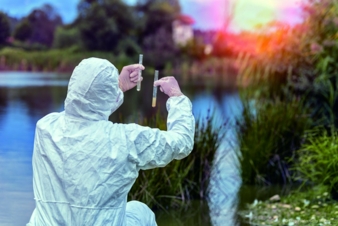30/06/2017 – 25 years Oeko-Tex — auf Deutsch lesen
Time to reflect
Founded in 1992, Oeko-Tex enables today both companies and consumers to make responsible "textile" decisions .
1992: Toxic clothing
In the early 1990s, Stern, Spiegel and other newspapers run articles with titles such as “Allergierisiko Textilien” [allergy-risk textiles], “Gift in Kleidern” [toxic clothing] and “Öko-Label im Gespräch” [eco label under discussion]. It is a time in which the topic of irritants is omnipresent in the media, whether relating to food, rain, or clothing.
This gives the impression that all textiles and apparel are bad and dangerous. The manufacturing textile industry is under enormous pressure. The experts from the Austrian Textile Research Institute (ÖTI) and the German research institute Hohenstein recognise this too. Companies who already have their textiles tested for various harmful substances by one of these institutes do not actually have the opportunity to demonstrate these efforts externally and to consumers.
In numerous meetings between the ÖTI and Hohenstein, the idea was forming that a common, standardised and global label could be created for the monitoring of textiles, clothing and accessory materials which indicated to the end consumer that: this product been tested for harmful substances and offers high-level and effective product safety with respect to chemical substances that are harmful to health.
The pioneer in human-ecological textile testing and effective consumer protection is founded
In 1992, the International Association for Research and Testing in the Field of Textile Ecology, in short Oeko-Tex is established. And so the Oeko-Tex success story takes its course. The product certification Standard 100 by Oeko-Tex (until autumn 2016, known as: Oeko-Tex Standard 100) is the first Oeko-Tex product on the market – and would become the most well-known Oeko-Tex label.
It is issued for all types of textiles and clothing accessory materials that are successfully tested in accordance with the human-ecological criteria of the standard. If the content, for example, of prohibited colorants, pesticides, formaldehyde or heavy metals is below specific, strictly defined threshold values, the item of clothing or bedding is given this label and it is clearly visible.
The test criteria and valid threshold values have a scientific basis and are modified, or if necessary, tightened, at least once a year or as required. Oeko- Tex thus makes the first fashion brands and suppliers of home textiles who receive this certification early pioneers of product safety.
Time to reflect: In our review and outlook in the printed issue textile network 7-8/2017 we summarise the most important milestones in the success story of Oeko-Tex. You do not have a subscription yet? No problem. Order your free printed magazine HERE




